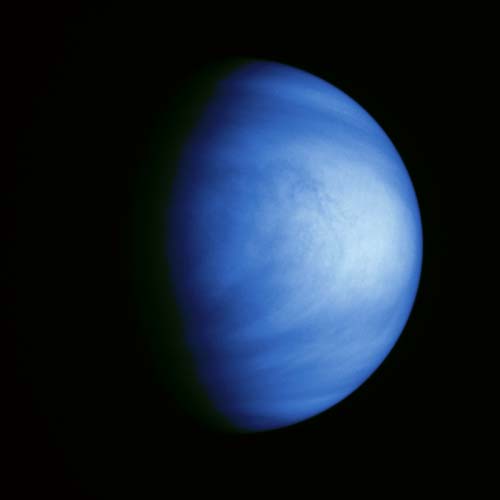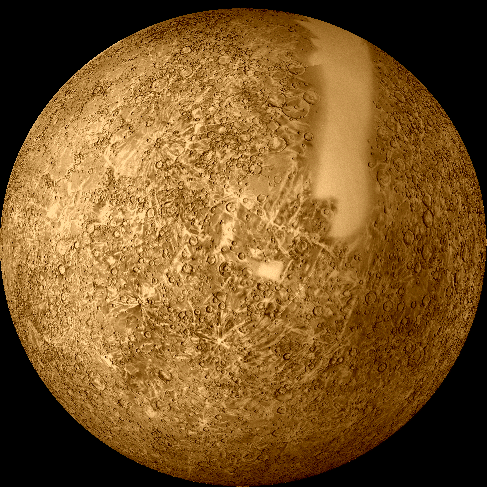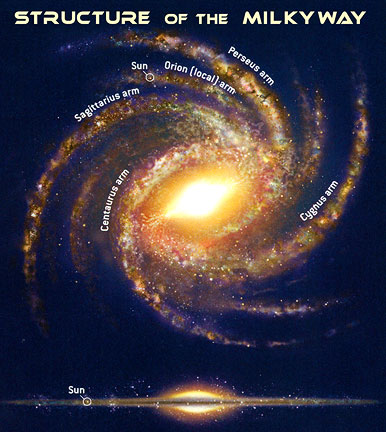THE EARTH FROM OUTER SPACE

What does the earth look like from Outer space?

Apollo astronaut Gene Cernan Joked to Mission Control in 1972 from 48,000 kilometres out in space 'I know we're not the first to discover this, but we'd like to confirm from the new apollo 17, that the world is round!
Our Home planet is, no doubt, a very interesting place. From space, it looks like a big blue marble, with the constantly changing clouds patterns giving it an ever - changing appearance. Because over seventy percent of Earth's surface is covered with water, the predominant colour you would see from space is blue.
However, the continents would provid an interesting colour show of their own, ranging from the stark white of Antarctica through the browns of north Africa and on to the mostly greens of Asia and the Americas. At the same time, the oceans and our atmosphere interact with each other to create constantly changing cloud patters that would resemble a kind of kaleidoscope.
How long does it take the earth to complete one turn?

The earth takes exactly 23 hours 56 minutes and 4.09 seconds to complete one turn on its axis. However since it is moving around the sund as it turns, it takes exactly 24 hours for us to see the sun in the same place in the sky. That is why we say one day is 24 hours long.
The earth also takes 365.242 days to travel around the sun, and for the sake of convience we calculate a year to be made up of 365 days.
What are the unique features of earth as a planet?

There are number of things that make our planet unique in the solar system. To begin with, we are the only planet so far that we know for certain, has ever had life of any kind. This may change in the future, but so far we are the only planet that supports life.
Life is possible on earth because most of the surface of our planet is covered with water and we are protected from most of the sun's dangerous radiation by our atmosphere. Our atmosphere which is the layer of gas surrounding earth, is made up of about 77% nitrogen and 21% oxygen, which is what we humans and animals breathe. Other gases occur in variable concentrations.
In Short, our planet is unique in that it is warm - but not boiling, cold but not freezing all the time. Water covers three fourth of its surface, and its atmosphere contains oxygen...Which is why it is the only planet in the solar system that has life.
What is the position of the earth in the galaxy?

Our Sun is just one of 100 billion stars arranged in a shape like a fried egg. This hug star city is called a galaxy, and it is more than 100,000 light years width. Our galaxy is in turn, only one of billion of galaxies scattered throughout space... which gives you an idea of how tine our world is!
The location of the earth in our solar system, galaxy and univer can mean the difference between the lush, vibrant planet on which we live and a barren wasteland, devoid of life. If a planet is too close to its star, it is doused with solar radiation. It becomes superheated like Venus, which has a surface temperature of approximately 700 degrees Fahrenheit. Some planets are so far away from thir star that they are icy wastelands.
The earth is just one planet whose distance from the sun is just right to support life.
Who are the neighbours of planet earth?


VENUS MARS
Of the other planets revolving around the sun, Veus is the closest, followed by mars.
Our other neighbours are Mercury Jupiter, Saturn, Uranus, Neptune and Pluto, which is a dwarf planet.


Mercury Jupiter


Saturn Uranus


Neptune Pluto
Asteroids, comets and other rocks and gas also orbit around the sun. They are, in a way, our neighbours too!

The biggest of all our neighbours is Jupiter. It is followed by Saturn, Uranus, Neptune, Earth, Venus, Mars, Mecury and finally tiny pluto. Jupiter is so big that all the other planets could fit inside it!
Why is the same face of the moon turned towards the earth always?

We all know that the earth rotates on its axis, even as it revolves around the sun, Similarly, the moon also spins on its axis as it orbits the earth.
We also know that the moon's tidal forces cause the high and low tides on the earth. In the same way, the earth exerts tidal forces on the moon. The tidal forces exerted by the earth are very powerful and these forces slow the rotation of the moon. As a result, moon rotates on its axis only actly the same time it takes to orbit the moon only shows one face to the earth.
How far is the earth from the sun?

The earth is the third planet out from the sun between Venus and Mars. On an average, the earth is 148.8 millions kilometres away from the sun, but the distance varies depending on the time of the year.
The earth is closest to the sun on January 3rd and this is called perihelion. It is the farthest away from the sun on July 4th and this is called the aphelion
What is a Meteorite?

A meteorite is a natural object originating in outer space that survives an impact with the earth's surface without being destroyed.
While it is still in space, a meteoroid
When a meteoroid enters the atmosphere, it heats up and emits light, forming a fireball. It is then known as meteor, or shooting star.
Only very large meteroid reach the earth as meterorites. The largest know meteorites still likes where it fell in Hoba West, in Nambia in South West Africa. It is over two metres across, and weighs as much as 60 medium sized cars!
What is an Asteroid?

Asteroids are also called minor planets or planetoids. They are a diverse group of small celestial bodies that drift in the solar system and are on orbit around the sun.

The First asteroid to be discovered, Ceres is the largest known asteroid to date. It measures about 1000 kilometres across its width. The vast majorityof asteroids are found within the main asteroid belt, with elliptical or bits between those of Mars and Jupiter. Some though pass through the earth's orbit, while others go beyond Saturn.
Hundreds of thousands of asteroids have been discovered within the solar system, and the present rate of discovery is about 5000 per month!
What is a Commet?

A comet is a small body in the solar system that orbits the sun and at least occasionally, exhibits a tail. Did you know that comets are sometimes called 'dirty snowballs'? This is because they are icy bodies in which particles of sand and dust are mixed with.
When a comet passes near the sun, the heat of the sun turns the ice into gas, and the dust pours out into space. This gives the comet a long tail, and a hazy look as well. As the comet approaches the sun, its tail can become several million kilometres long!
Comets are invisible except when they are near the sun. They are at their brightest when they are closest to the sun, as they move away from the sun, they become fainter and fainter until they cannot be seen at all.

Comets move in orbits that are elongated. Some of them have been eccentric orbits and are seen only once. Others, like Halley's Comet, have regular orbits. This means we can know exactly when they will be seen again. For Example, Halley's Comet will be seen in 2061.
What would happen if a comet hit the earth?

The chances of a comet hitting the earth are very, very small indeed. A serious collision may occur only once in a hundred million years.
A collision with a comet would not do as much harm as a collision with an asteroid of the same size. The reason is that comets particles, while asteroids contains solid rock and metals that can cause great damage on impact.
In 1910, the tail of halley's Comet swept across the earth. However, since the tail was very thin and made up mostly of dust particles, no damage was caused.
What causes the season?


During the year, the seasons change depending on the amount of sunlight reaching the earth as it revolves around the sun. The seasons are caused by the tilt of the earth axis as it travels in a loop around the sun each year.
In some places, the sun's warmth makes winds blow from the land to the sea. The air will be dry then, and it will be the dry season in these places.
As the earth continues on its orbit, the winds change direction. They will now blow from the sea to the land, and the rainy season will begin.
You many have also noticed that during summer, the days are longer. This is whyit can get so warm during summer. The long hours or sunlight really heat things up
In winter months the days are shorter. When the days become shorter, the sun does not have as many hours to warm the earth, so it will be much cooler.

Winter in switzerland
In the tropics, there are generally just two seasons - the dry season and the rainy season. In temperate regions though, there are four seasons - spring, summer, autumn and winter.
Did you know that, because of the tilt of the earth, the seasons are reversed in the northern and Southern Hemisphere? So when it is summer in the Northern hemisphere, it will be winter in the Southern hemisphere!
Why do we say the earth is moving all the time?

Milky Way Galaxy
Even though the earth may seem still to us. It is actually moving in three waves all the time!
Firstly, the earth rotates on its own axis (the axis is an imaginary line drawn from pole to pole). It takes the earth 24 hours to finish one rotation.
Secondly, the earth revolves around the sun. One revolution around the sun takes 365 days, which is one year.
Thirdly the earth is part of the solar system, and races through space as a part of the Milky Way Galaxy.
What causes Tides?

The moon, like the earth, has a force of attraction too. This is called its gravitational pull. This causes bulges in the earth's oceans
The moon pulls water towards it and this causes the ocean to bulge towards the moon. The bulge on the side of the earth opposite the moon is caused by the moon 'pulling the earth away' from the water on that side.
If you are on the coast and the moon is directly overhead, you should experience a high tide. If the moon is directly overhead on the opposite side of earth, you should also experience highest tide.
As the earth spins on its axis, every place will pass through two tidal bulge each day. So every place on the coast will experience two high tides and low tides as the sea level rides and falls twice a day.
Why do we have leap years?

Generally we calculate one year as 365 days. But it is not exactly correct. The earth takes 365.242 days to go around the sun. But for the sake of convenience, a year in our calender is calculated to be 365 days. This means that every four years, we get an extra day. So every fourth year is called a leap year, and the extra day is added to the month of February. That is why February has 29 days in a leap year. Even so, to keep our calendar accurate, we must leave out a leap year at the end of three centuries out of four.
If your birthday falls on February 29th, dont be afraid that you will be able to celebrate it only once in every four years...just celebrate on February 28th in ordinary years, and have a big bash on a leap year!
Why does a Rainbow appear in the sky?

A rainbow is one of the most spectacular light shows observed on earth. Poets have sung of its beauty, and you must have gasped with pleasure whenever you have seen one. But do you know what causes a rainbow?
You may have studied that light is actually made up of a collection of many colours - red, orange, yellow green, blue, Indigo and Violet. If you pass light through a triangular pice of glass know as prism, it will come out on opposite side as a band, or spectrum, made up of these colours. Why does this happen?
The reason is that when light passes from once substance to another, it is bent slightly, and each colour is bent slightly, and each colour is bent to a different degree. So when the colours emerge from the prism, they are seperated.
This phenomenon is repeated in the rainbow. When sunlight passes through raindrops, it splits into seven different colours of spectrum. These are the colours that you see in the rainbow.
STAR FACTS - 10 LARGEST ISLANDS IN THE WORLD.
| Name |
Ocean or Sea |
Area (in sqkm) |
| Greenland |
Artic |
2175600 |
| New Guinea |
W.Pacific |
800000 |
| Borneo |
Indian |
751929 |
| Madagascar |
Indian |
587041 |
| Baffin Island |
Artic |
476078 |
| Sumatra |
Indian |
467356 |
| Great Britain |
N.Atlantic |
228300 |
| Honshu |
N.W.Atlantic |
227898 |
| Ellesmere Island |
Artic |
210224 |
| Victoria Island |
Artic |
209740 |
How was the Rainbow Bridge Formed?

The Rainbow Bridge in the Colorado Plateau of United states is the largest natural brige in the world. It spans at distance of 84 metres. From its base to top, the Bridge towers to a height of 88 metres. And the top of the bridge with a width of 10 metres is as wide as a highway.
Rainbow bridge is not only huge but also extremely beautiful. Scientist, have not yet come to agreement on how this marvellous bridge could be formed.
According to the legend the bridge was formed when Rainbow turned into stone. When the late afternoon sun strikes the pinkish sandstone streaked with variegated reds and brown, the effect is especially impressive like a rainbow. Visitors then can understand why the legand described it as 'rainbow turned to stone'.
The bridge is carved in a layer of sandstone as wind blown dunes, and it rests on a foundation of much harder sandstone. It began to take shape some 60 million years ago, when the entire Colorado Plateau started to dome slowly but steadily upward.
As the land arched up, a river that flowed across the surface in broad, meandering loops carved a canyon deeper and deeper in the rock. According to one theory in tight curve around a thin projecting spur of rock. Eventualy the river carved an opening through the base of the spur.
Another theory suggests that the archway developed by rapid heating and cooling of the canyon walls in the desert climate. Bit by bit, the opening was enlarged to form today's monumental span.